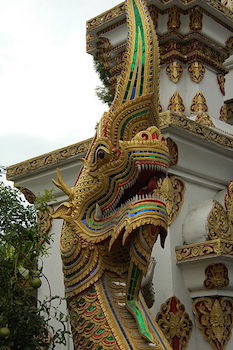Product Description
Burma, “Naga” dragon ring, high carat gold (22K +) enameled and set with 27 cabochons consisting of rubies, sapphires, emeralds, diamonds and other precious stones, second half 18th Century



These impressive and rare dragon rings have been a feature of all the great ring collections, including the Harari, Guilhou, Spitzer, Franks, and Koch collections. They are known as ‘Naga rings’ because they are thought to represent the naga dragon which is thought to have sheltered the Buddha during a prolonged period of meditation. Chadour suggests that these rings were made for Royalty. The extravagant design certainly re-enforces the idea that they were made for lavish ceremonial use. Another example is in the British Museum.
Burma, “Naga” dragon ring, high carat gold (22K +) enameled and set with 27 cabochons consisting of rubies, sapphires, emeralds, diamonds and other precious stones, second half 18th Century
FRENCH ART NOUVEAU
JULIEN CAUSSE attr. (1869-1914) Bourges, France
Bronze and frosted glass grape cluster and vine lamp c. 1900
L: 24″ x dia (grape cluster): 7″
Julien Causse was born in Bourges, France and worked from 1890 – 1914. He studied in Paris under Falguiére and exhibited at The Salon des Artists Francais in the 1890s, obtaining honourable mentions in 1882 and 1900 and a third class medal in 1893. He also took part in the exposition Universelle of 1900.
